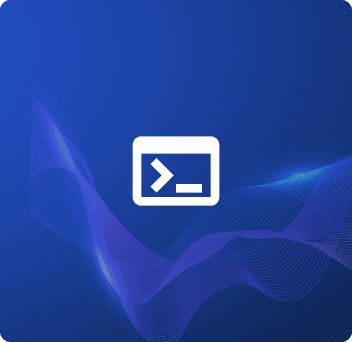Updated: November 26, 2025- 13 min read
Demand for AI Product Owners (and AI PMs) has exploded. Generative-AI job postings jumped roughly 10x from mid-2023 to mid-2024 and 75x over two years (1). Forrester is seeing the same shift, with “AI product manager” and “AI product owner” emerging as fast-growing roles (2).
In Agile product management, the Product Owner is “accountable for maximizing the value of the product.” When AI enters the picture, that mandate stretches across business outcomes, model performance, and data quality. In practice, an AI Product Owner sits where business needs, technology, and data intersect, owning value, safety, and reliability end-to-end.
In this guide, we’ll map the AI Product Owner role, day-to-day responsibilities, and the skills that actually matter. We’ll draw a clean line between an AI Product Owner and a Product Manager (and, if you want the broader PM track, here’s our AI PM pillar).
AI PRD Template
Plan, strategize, and align stakeholders around the key requirements unique to AI products.
By sharing your email, you agree to our Privacy Policy and Terms of Service

What Is an AI Product Owner?
An AI product owner is the person who ensures that AI-powered products or features deliver real value. They translate business needs into clear requirements, manage the product backlog, and work closely with data scientists, engineers, and stakeholders to build AI responsibly and effectively.
The role of an AI product owner is best understood at the intersection of traditional product ownership and the unique demands of artificial intelligence.
A standard product owner focuses on maximizing product value through product prioritization, backlog refinement, and stakeholder management. An AI Product Owner does all of this, but also navigates the complexities of data, models, AI tools, RAG, agentic AI, and AI ethics.

There are generally two types of AI product owners at this point in time:
AI-native product owners
Here, the AI is the product. Think of a recommendation engine, a fraud detection system, or a generative AI platform. In this context, the product owner manages not just features but also model performance, data pipelines, and OKRs that may shift as models retrain. Their backlog is full of experiments, data improvements, and iterations on algorithms. Success depends on how well the AI adapts to real-world inputs.AI-augmented product owners
In this case, the product itself may not be “AI,” but the product owner uses AI tools, AI agents, and RAG systems to do their job better. They might rely on large language models to draft user stories, analyze customer feedback at scale, or generate prototypes for stakeholder validation. Here, the AI doesn’t sit in the product. It accelerates how the product owner works, making them faster and sharper in backlog refinement, market research, user research, and communication.
The distinction matters. In the AI-native path, you’re deeply entangled with data scientists and ML engineers, common alternative career options for software engineers. You spend time aligning technical feasibility with ethical standards and product goals. In the AI-augmented path, you’re more of a power user. You’re someone who uses AI as leverage to sharpen product thinking and execution.
In both cases, the core principle stays the same: the AI product owner maximizes product value. But unlike in traditional roles, “value” here is shaped by new variables in training data, model bias, explainability, and user trust.
This blend of business strategy, technical awareness, and responsible AI practice is what sets the AI product owner apart.
Where this AI product owner role shows up
You’ll typically see “product owner” titles on Scrum-style delivery teams, including Data-Driven Scrum teams in data science and MLOps.
In these settings, the PO is a delivery-facing role accountable for key artifacts and interactions: the product goal, product backlog, sprint goal, backlog refinement, sprint planning, and stakeholder reviews. Many orgs pair a PM (market, portfolio, and outcomes) with a PO embedded in the squad (backlog, flow, and delivery).
In smaller teams, one person often wears both hats.
Key Responsibilities of AI Product Owners
AI product owners share many duties with traditional POs, but with added data and AI considerations. By Scrum definition, the PO’s job is to maximize product value and manage the backlog. In practice, an AI product owner typically will:
Define the AI product strategy, product vision, and roadmap: Collaborate with stakeholders to understand business goals and translate them into a clear AI vision. Communicate a strategic AI roadmap that aligns features with business impact.
Manage and prioritize the backlog: Maintain a prioritized backlog of AI features and user stories. Continuously update it based on feedback and changing business needs.
Facilitate cross-functional collaboration: Serve as a bridge between business leaders, data scientists, ML engineers, and developers. Ensure everyone shares a common understanding of the product goals.
Guide development sprints: Participate in sprint planning to break down AI work into tasks. Monitor sprint execution and remove blockers so that AI features are delivered on time.
Lead sprint reviews: Demonstrate new AI capabilities to stakeholders and gather feedback. Use retrospective insights to improve the team’s AI development process.
Communicate with stakeholders: Regularly engage sponsors and users to collect insights. Clearly demonstrate the value of AI solutions through presentations and prototy.
Manage AI-specific risks: Identify issues like data bias, privacy, or compliance concerns. Mitigate these risks by working with engineers and legal/compliance teams.
Ensure quality and ethics: Collaborate with QA and data teams to define test criteria for AI models. Verify model accuracy and fairness, and iterate until results meet quality standards.
Monitor performance and iterate: Track usage metrics and model performance in production. Use those insights to refine the AI product – making data-driven updates to improve outcomes.
These responsibilities can vary by organization and product, but in all cases the AI Product Owner combines classic backlog and stakeholder management with a focus on data quality, model performance, and ethical AI practice. In smaller companies, one person might act as both PO and PM, but in larger teams these are distinct roles.
Essential Skills for AI Product Owners
An AI product owner needs a hybrid skill set. Key skills include:
Data and AI knowledge: Solid understanding of data concepts and product analytics, plus familiarity with machine learning basics such as algorithms, datasets, and the model life cycle.
Technical acumen: Comfort with tools like Python or SQL, and some experience with ML platforms or cloud services. This helps you communicate effectively with engineers and understand feasibility.
Collaboration and communication: Ability to translate between business, product design, and technical teams. You’ll work closely with data scientists, engineers, product designers, and marketers, so empathy and clarity are vital.
Ethical leadership: Awareness of responsible AI practices and bias mitigation. An AI product owner should advocate for user-centric, fair AI and ensure decisions align with ethical standards.
Business/domain savvy: Strong grasp of the industry and customer problems. You need to connect AI capabilities to real business value and concrete market challenges.
Agile & Scrum expertise: Experience running iterative sprints and managing a backlog using Agile methodologies.
Leadership and teamwork: Confidence in guiding cross-functional teams, aligning priorities, and motivating people around a shared goal.
In short, an AI product owner is part PM, part data strategist, and part technical collaborator. You need to be comfortable working alongside engineers and statisticians, while also speaking the language of business and users.
AI Product Owner vs. Other Types of Product Managers
The role of an AI product owner is a type of product management position, but the focus and responsibilities are unique in meaningful ways.
AI product manager vs. AI product owner
An AI product manager is primarily responsible for AI product strategy. They focus on market trends, customer problems, positioning, and long-term vision. Their job is to decide what the product should become and why it matters. They engage with executives, define go-to-market strategies, and ensure the product aligns with business objectives.
An AI product owner, on the other hand, is closer to execution. They turn that vision into backlog items, user stories, and sprint goals. Their work happens day-to-day with development teams, data scientists, and ML engineers. While the manager defines the “what and why,” the owner handles the “how and when.”
In small companies, one person often plays both roles. In larger product-led organizations, the separation is clearer: the manager owns the strategy, while the owner ensures delivery and value creation at the team level.
AI product owner vs. data product manager
A data product manager focuses specifically on products built around data itself. Their core responsibility is ensuring that data pipelines, platforms, or analytics services meet business needs. They think in terms of data quality, governance, integration, and scalability. Their stakeholders are often product analysts, data scientists, and internal teams who consume data.
An AI product owner has a broader scope. While they also care deeply about data, they extend that focus to model performance, ethical use of AI, and delivering user-facing features. Instead of just ensuring that data flows correctly, they connect that data to trained models and end-user value.
The difference lies in where they sit in the value chain. A data product manager ensures the data foundation is solid. An AI product owner takes that foundation and guides the creation of AI-driven features that solve customer problems and move the business forward.
AI product owner vs. product manager
A product manager is focused on the product strategy, product-market fit, and overall vision. An AI product owner is closer to delivery, turning that strategy into backlog items and sprint work with development and data science teams.
Technical product manager vs. AI product owner
A technical product manager ensures complex systems, APIs, or platforms meet user and business needs, often with a deep engineering focus. An AI product owner balances technical feasibility with data quality, model performance, and ethics to create AI-driven features that deliver measurable value.
Tools that AI Product Owners Use
AI tools can transform how product owners work, especially in areas like retrieval-augmented generation (RAG) and AI agents. These add powerful capabilities to product analysis, decision-making, and execution.
Understanding RAG and why it matters
Retrieval-augmented generation (RAG) lets large language models pull in up-to-date and specific information from external sources before generating output.
That means your AI can reference internal docs, knowledge bases, or real-time data, not just its original training. RAG helps reduce hallucinations and keeps responses relevant and grounded.
As one Glen Coates, VP of Product at Shopify, put it on The Product Podcast:
You have to be able to get to the data that will go into that AI prompt, and that’s a major challenge for many large companies.
This is exactly where RAG becomes critical: it bridges the gap between inaccessible data and usable product insights.
RAG is key when you need accuracy, domain context, or content that changes over time. It helps deliver results that product outcomes rely on, like feature specs or user insights.
What are AI agents and how they help
AI agents for product managers and owners are autonomous workflows that combine RAG, reasoning, and action. They can analyze feedback, evaluate data, make decisions, and even trigger tasks (like creating a ticket or sending a summary).
This shift is already visible in real-world teams, to cite Glen Coates again:
We’ve exposed our AI assistant to our dev docs. This allowed us to ask an agent to look up API calls and integrate them directly into ou editor. Powerful.
That’s the power of agents. They embed directly into workflows, accelerating how product teams move from idea to implementation.
They’re like intelligent teammates that execute specific parts of your product workflow.
Concrete use cases for product owners
Feedback synthesis at scale: Feed support tickets, interviews, or survey data into a RAG-enabled agent to distill common themes, sentiment, or feature requests.
Roadmap scenario modeling: Use RAG tools to simulate “what-if” scenarios based on market reports and internal analytics, then let an AI agent draft recommendation outlines.
Continuous documentation: AI agents can generate design docs, release notes, or sprint summaries by combining new info pulled via RAG from tickets, code changes, or surveys.
Risk and ethics monitoring: RAG agents can scan for biased outputs, outdated documentation, or compliance issues and flag them for review.
Tools you can use
Here are domain-specific tools for RAG and AI agents that product owners (especially AI-focused ones) can adopt:
RAG frameworks and platforms
LangChain: A flexible framework for chaining LLMs with external data sources
LlamaIndex: Helps you build RAG pipelines by indexing and retrieving from your own data
Deepset Haystack: Enables RAG systems, chatbots, and knowledge apps with customizable pipelines
AWS Bedrock: A managed service that offers foundation models with support for secure RAG applications
Vector databases (common RAG backends)
Pinecone: Fast, scalable vector search and embed storage
Weaviate: Open-source database optimized for semantic search and RAG
Agent and automation tools
Odin AI: No-code platform for building AI agents that handle feedback analysis, meeting summaries, and roadmap coordination
Contextual AI: Platform to build RAG agents with domain-specific customization and citation control
FuseBase: Integrates AI agents using the Model Context Protocol (MCP) for seamless interaction with external systems
How to Become an AI Product Owner
Getting into the AI product owner role requires building on classic product ownership skills while layering in AI knowledge and practical experience. Here’s a career path to learn, train, and grow into the role:
Start with product fundamentals: Build a foundation in Agile PM and Scrum, backlog refinement, and stakeholder management. A strong grasp of product basics is the starting point for any specialization.
Learn data and AI essentials: Study machine learning concepts, data lifecycle management, and AI ethics. Focus on how models are trained, validated, and deployed rather than trying to become a data scientist.
Develop technical fluency: Get hands-on with tools like Python, SQL, and cloud services. Familiarize yourself with RAG frameworks such as LangChain or LlamaIndex, and experiment with vector databases like Pinecone or Weaviate.
Work with AI tools directly: Use AI agents for tasks like drafting user stories, analyzing feedback, or summarizing sprint notes. The more you practice, the better you’ll understand their strengths and limitations.
Build cross-functional experience: Collaborate with engineers, data scientists, and designers. Volunteer for projects that use AI features or data pipelines so you can practice being the bridge between business and technical teams.
Focus on ethical and responsible AI: Learn how to spot bias, manage compliance, and ensure transparency. These are critical areas where AI product owners add value.
Strengthen domain expertise: Whether in SaaS, healthcare, fintech, or another industry, understand how AI is applied in your field. Domain knowledge helps you connect technical possibilities with real business outcomes.
Showcase AI product work: Build a portfolio by documenting side projects, prototypes, or case studies. Highlight how you defined requirements, balanced product goals with technical feasibility, and delivered AI-driven value.
Seek mentorship and community: Join AI product management groups, attend AI/ML conferences, and connect with experienced professionals. Feedback and exposure will accelerate your growth.
Commit to continuous learning: AI evolves quickly. Stay sharp by following research, experimenting with new tools, and adapting to emerging practices in RAG, AI agents, and beyond.
The Future of the AI Product Owner
The AI product owner is quickly becoming one of the most important roles in product teams.
Unlike traditional ownership, this position blends backlog management with data, models, and ethics. With tools like RAG systems, vector databases, and AI agents shaping everyday workflows, AI product owners who master both strategy and technology will drive the next generation of product innovation.
If the last decade was about learning Agile and embracing customer-centricity, the next one will be about mastering AI. And the product owners who do that first will lead the future.
AI Product Management Certification
Adopt an AI-first mindset: design AI-native UX, build agents, define modern PRDs, and ship trustworthy AI-powered products.
Enroll now
(1): https://www.fastcompany.com/91136553/generative-ai-job-postings-increase-indeed
(2): https://www.forrester.com/blogs/ai-product-managers
Updated: November 26, 2025





